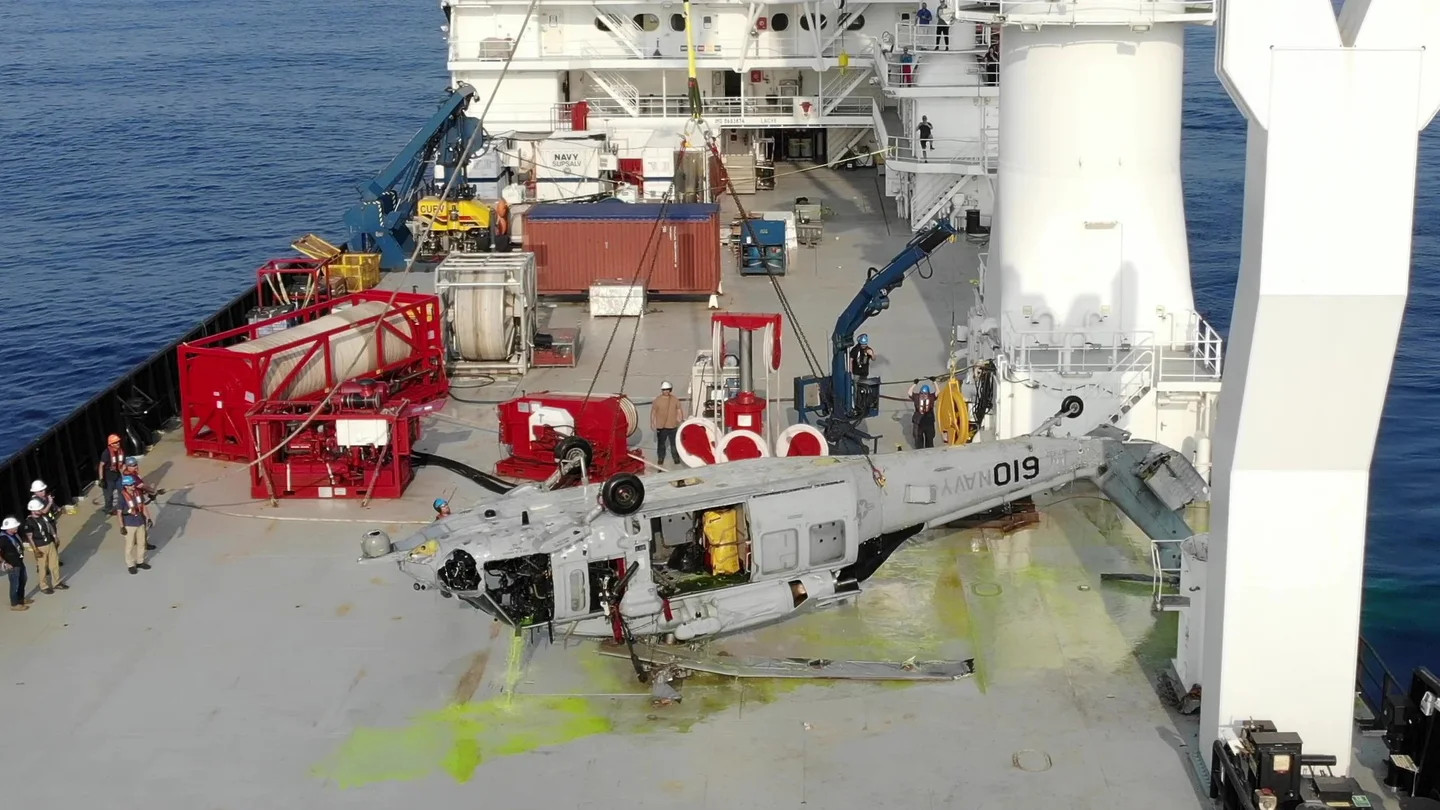The U.S. Navy says it is assessing its options for recovering an F-35C Joint Strike Strike Fighter that fell into the South China Sea yesterday after a failed landing attempt on board the aircraft carrier USS Carl Vinson. The service is almost certain to try to retrieve as much of the jet as possible to prevent sensitive components, and the information about aircraft’s advanced capabilities that might be gleaned from them, from falling into the hands of America’s competitors, such as Russia or China.
The U.S. Seventh Fleet, headquartered in Japan, confirmed that the F-35C had fallen off Carl Vinson‘s deck as a result of the accident in a statement this morning. The U.S. Pacific Fleet’s public affairs office had previously declined to confirm or deny that detail.

“I can confirm the aircraft impacted the flight deck during landing and subsequently fell to the water,” Navy Lt. Mark Langford, a Seventh Fleet spokesperson, said. “No additional information is available at this time.”
Landford also provided additional details about the mishap itself and the resulting casualties.
“Seven total personnel were injured, including the pilot. The pilot and two other Sailors were MEDEVAC’d to a medical treatment facility in Manila, Philippines, and four Sailors were treated by on-board medical personnel,” he explained. “All injured Sailors have been reported to [have] recovered or [are] in stable condition.”
“Impact to the flight deck was superficial and all equipment for flight operations is operational,” he added. “Carrier Air Wing (CVW) 2 and USS Carl Vinson (CVN 70) have resumed routine flight operations in the South China Sea.”
Exactly how the accident occurred remains unclear. The Navy has not yet provided any official details, saying the matter is still under investigation.
Lt. Langford’s statement also did not provide any details about what plans the Navy might have now for attempting to recover the F-35C. However, The Associated Press has reported that he had told them that “the status and recovery of the aircraft is currently under investigation.” The War Zone has already reached out to Seventh Fleet for more information.
Recovering the jet is very likely to be a top priority for the Navy now if doing so is at all possible. The lost F-35C, especially if it was largely intact when it fell into the sea, could easily be an intelligence prize for any foreign power with the means to recover it, either in whole or in part. Russia is particularly well-known to have a small, but highly capable fleet of special mission submarines, as well as specialized surface vessels, with the ability to carry out deep-sea salvage and underwater espionage missions.
China, which claims virtually all of the South China Sea as its sovereign national territory and routinely criticizes American naval and other military activities in the region, would have a definite interest in retrieving the jet if possible, as well.
After a British F-35B Joint Strike Fighter fell into the Mediterranean Sea during a failed takeoff attempt from the Royal Navy’s carrier HMS Queen Elizabeth last year, the U.K. government was prompted by similar concerns to launch its own recovery mission with American assistance. That jet was subsequently retrieved, reportedly after having come to rest on the seafloor one mile below the surface.
The depth of the water at the site of this U.S. Navy accident, as well as weather and other environmental factors, will all be among the various elements the service can be expected to take into account when determining whether such a recovery operation is practical. If the aircraft sunk, just determining its final resting place could be a complicated affair.
The bulk of a Japanese F-35A that crashed into the Pacific Ocean in 2019 was never recovered, at least that we know of. At the same time, that aircraft hit the water at high speed and broke up to a not-insignificant degree. This Navy F-35C would have been flying at much lower speeds as it approached the carrier to land, increasing the possibility that it is much more intact and would therefore demand a retrieval operation, no matter how complex, to protect major technological secrets.
The Navy certainly does have its own fleet of surface ships with extensive deep-sea salvage capabilities, as well as specialized submarines that could support such a mission. Employing contractor-owned and operated vessels is another option. Last year, the service retrieved an MH-60S Seahawk helicopter that had crashed off the coast of the Japanese island of Okinawa in 2020 from what it said was a record-setting depth of 19,075 feet.

It remains to be seen what course of action the Navy will ultimately take in attempting to retrieve its lost F-35C, but it would seem very plausible that the race to extract it from the South China Sea, which is right in China’s backyard, is on.
We will continue to update this story as more information becomes available.
Editor’s note: This story originally contained an unconfirmed report regarding the circumstances of this accident. However, as was made clear initially, there is nothing to substantiate that information at this time. It has been removed so as not to foster speculation regardless.
Contact the author: joe@thedrive.com
